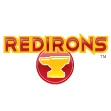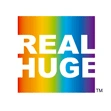When designing a logo, many business owners ask whether graphics, images, and icons in logo design are essential. The truth is, a logo doesn’t always need a graphic element to be effective. Some of the world’s most memorable logos rely on typography alone, while others gain their strength from a well-placed image or icon. The decision depends on your brand strategy, your audience, and the impression you want to create.
This guide explores when to include graphics, images, or icons in your logo, how to use them strategically, and what pitfalls to avoid.

Why Strategy Comes Before Design
A great logo doesn’t start with shapes or symbols—it starts with a clear understanding of your business mission. Your logo is a visual shortcut to your brand’s identity, and every design choice must align with your strategy. At Brandings, we recommend focusing on the following fundamentals before adding visual elements:
- Typography matters: Choose a font style that reflects your brand personality and works with or without a graphic.
- Color balance: Avoid using too many colors that may distract or weaken brand recognition.
- Visual harmony: Ensure that all elements—text, icons, and images—work together cohesively.
- Aesthetic balance: Use contrast wisely so your design remains clean and professional.
If a graphic element doesn’t enhance your strategic goals, your logo may be stronger without it.
When to Use Graphics, Images, or Icons
Adding graphics images icons in logo design can transform a simple wordmark into a memorable brand asset. But not every logo benefits from visual elements. Here are the situations where icons and images make sense:
- Boosting recognition: A strong, simple icon can make your logo instantly recognizable.
- Telling a story: Graphics can visually communicate your brand’s values, industry, or mission.
- Standing out in crowded markets: An icon helps differentiate your logo from competitors using only text.
- Enhancing memorability: Consumers are more likely to remember an image-based design when it aligns with your brand message.
However, poor graphic choices can damage your brand image just as quickly. An icon that feels unrelated, outdated, or overly complex can create confusion or negative associations.
Rule of thumb: If the graphic doesn’t increase clarity, recognition, or strategic value, it’s better to leave it out.
Achieving Balance Between Typography and Imagery
The most effective logos maintain a sense of unity between text and visuals. A graphic or icon should never overshadow the typography—it should support it. For example:
- Bold, geometric icons work best with clean, modern fonts.
- Delicate script fonts pair better with subtle, minimal icons.
- Overly detailed graphics often clash with simple typefaces and create visual overload.
Harmony is key. Think of your logo as a composition where every element—whether a line of text or an abstract shape—works together to communicate a single, strong idea.
Drawing Inspiration from Existing Designs
One of the best ways to clarify your preferences is to study existing logos. Browse professional logo catalogs and pay attention to:
- Color schemes that feel aligned with your brand identity.
- Font and image pairings that create balance.
- Examples where graphics strengthen the overall logo.
- Cases where graphics feel unnecessary or distracting.
At Brandings, our extensive online catalog showcases thousands of professional logo designs with a wide range of typestyles, icons, and color palettes. While all designs carry trademark protection, they can inspire your own creative direction and help you identify what works for your brand.
Protecting Your Logo Design
Your logo isn’t just a visual—it’s intellectual property. Once created, it should be legally protected under copyright and trademark law.
Unauthorized use of a protected logo can lead to severe penalties, including:
- Statutory damages of $750 to $30,000 per violation.
- Up to $150,000 per violation in cases of willful infringement.
At Brandings, we actively monitor our catalog to prevent unauthorized use and protect the value of our designs. Whether you design your own logo or work with professionals, securing your rights ensures that your brand identity remains uniquely yours.
Professional Logo Design Services
If you’re considering adding graphics, images, and icons in logo design, but want expert guidance, our team at Brandings can help. We specialize in creating logos that balance strategic messaging with aesthetic appeal.
Our custom design services start at $995—an ideal solution for startups and small businesses looking to launch with a professional, distinctive identity.
A well-designed logo is more than just a visual mark; it’s the foundation of your brand image. Make it count.
Conclusion
The use of graphics, images, and icons in logo design is a powerful tool—but only when applied thoughtfully. While some logos shine without visual symbols, others gain distinction and memorability through carefully chosen icons. The key is alignment: your logo should always reinforce your strategic objectives, connect with your audience, and represent your brand authentically.
By balancing typography, color, and imagery, you’ll create a logo that doesn’t just look good—it tells your brand’s story.
Frequently Asked Questions (FAQ) About Graphics, Images & Icons in Logo Design
No. Not all logos require graphics images icons in logo design to be effective. Some of the most recognizable logos, like Google or Coca-Cola, rely solely on typography. The decision depends on whether a graphic element supports your brand strategy and strengthens recognition.
You should add graphics images icons in logo design when they enhance memorability, clearly represent your brand values, or help you stand out in your industry. If the graphic doesn’t improve clarity or brand identity, it’s best to leave it out.
A good icon is simple, scalable, and relevant. It should look clear at any size, align with your brand’s personality, and work harmoniously with typography. Overly complex images often fail in logo design because they lose impact at smaller sizes.
Balance comes from cohesion. Typography and graphics should feel like they belong together. For example, bold fonts usually pair well with strong, geometric icons, while elegant script fonts may look better with subtle, minimal imagery.
While stock icons can inspire ideas, they shouldn’t be used as your final logo. Logos must be unique to avoid trademark issues. If you use stock graphics, customize them heavily or, better yet, invest in a professional designer to create an original concept.
Once your logo is finalized, you should trademark it. This ensures that your graphics images icons in logo design are protected under copyright and trademark laws. Protection helps prevent others from copying or misusing your brand identity.






The company I want to start is general construction company.
Thanks for the comment. A general construction company needs to sound secure and trust worthy. We have developed many names fit for a construction company that you should check out.
If people are trusting you with building their house, they need confidence in you and they are trusting you with thier largest possession, their home and your company name needs to reflect that. Noting that this comment is coming in a logo blog, I would like to touch on that as well.
You logo should reflect what you do and it should also convey sturdy and trustworthiness. We don’t suggest fancy shapes or even very fluid fonts, you want solid colors and stable lettering. Something that looks sturdy and secure.
Thanks for the comment.